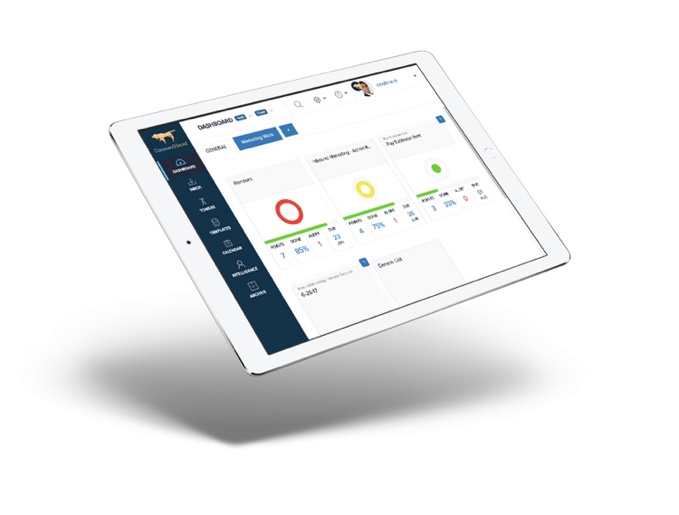Using Six Sigma to Deliver Near-Perfect Results
Have you ever wondered how a disciplined process like Six Sigma can actually delivery near perfect output of any kind in a business? You probably think the Six Sigma system is only used by large manufacturing companies with large teams solely dedicated to quality. Not really.

Six Sigma Initiatives Drive Business Excellence By Nearly Eliminating Defects
In a normal distribution of events, if your business delivers its products or services within one standard deviation (or Sigma) from the mean, then you are delivering your products or services without any issues or problems 68% of the time.
If you aim for two standard deviations (two Sigma) from the mean, then you are delivering perfectly 95% of the time. Three Sigma, 99.7& of the time, and so on.
A Six Sigma business is one in which 99.99966% of all opportunities to deliver a product or service are free of issue or defects. In other words, only 3.4 issues or defects per million opportunities!
This is as close as any business can get to a flawless execution of its key processes to deliver perfect products and/or services.
Key Concepts
To start, it helps to understand that, at the end of the day, Six Sigma focuses on 6 key metrics that ensure its objectives are met:
- Critical to Quality: Identify the most important attributes of your product or service to your customer
- Defect: Define what it means to fail to deliver what the customer wants
- Process Capability: Define what your business or process can actually deliver
- Variation: Define how you are going to know what the customer sees and feels
- Stable Operations: Define a way to ensure that consistent, predictable processes are defined and in place to constantly improve what the customer sees and feels
- Design for Six Sigma: Design new processes to meet customer expectations based on what your business can do

Proven Methodologies Can Effectively Drive Quality Initiatives in Any Business
There are a number of methodologies and tools that will help you start a Six Sigma initiative within your business. Most of these methodologies and tools are derived from William Deming’s Plan-Do-Study-Act cycle (PDSA) and include DMAIC (for improving existing processes) and DMADV (aimed at creating new product or process designs.)
Make It Happen
So, now that you know that there is a lot of know-how, tools, best practices, methodologies, and frameworks for improving quality towards a Sig Sigma standard, what is keeping you from moving in that direction?
Is it availability of resources, or time, or money? Have you ever tried to quantify what a significant reduction in errors and/or issues in your products or services would mean to the bottomline of your business? Try it, you will be surprised.
So, here are the top 3 things to do to get you started in your journey towards perfection:
1. Build a Business Case
Simply put, build a business case (cost/benefit and risk/reward analysis) of what it would mean to the business to substantially eliminate defects from your business processes prior to reaching the customer. This should be relatively easy because each error today can usually be directly tied to costs.
2. Decide How Far You Can Go
Based on your process, people, and technology capabilities, how far do you think you can push the quality issue? Three Sigma, Four, or all the way to Six Sigma? Be honest identifying what is achievable based on where the business is.
3. Sell It and Secure the Commitment
Armed with a compelling business case, it is now time to sell it and to secure the necessary resources to get started with your very own quality improvement program.
The Final Thing – Accountability
Once your quality project has been approved, your team is organized, resources are secured, goals and metrics are set, and your work plan with its deadlines, deliverables, and metrics is ready, you need to now make sure that a sense of accountability at all levels exists to make sure things get done.
This is especially true with quality initiatives because they require multi-disciplinary and cross-functional participation. Using a task management and accountability platform like CommandHound can greatly increase the visibility and accountability of any cross-functional project or initiative to make sure things get done as expected.

CommandHound Drives Accountability to Make Sure Things Get Done
CommandHound allows you to manage your entire work plan by being able to define tasks, due dates, responsibilities, deliverables, escalation triggers, and to report on status and exceptions as things progress. CommandHound has the unique ability amongst task management software of being able to define escalation triggers and paths to add a sense of urgency when things do not get done on time.
CommandHound also keeps track of how well individual members and teams are performing in completing their assigned tasks on time. This information can then be used for performance review purposes to add a strong sense of accountability to the whole effort.
Would you like to know how CommandHound can help you carry out a Six Sigma quality program in your organization to deliver practically error free products and services to your customers?
